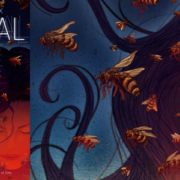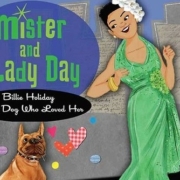© 2023 New York Foundling, Inc • 501(c)(3) • Tax ID #13-1624123
Terms of Use • Internet Privacy Policy • Notice of Privacy Practices • Financials • Report a Concern • Spanish • Website by Elefant
Thanks to Foundling friend Celia McGee for this Issue!
Ages 3-6
Water in the Park, by Emily Jenkins, illustrated by Stephanie Graegin. Schwartz & Wade Books.
In addition to all the things water does in a city, it can also tell the time of day.Well-known children’s book author Emily Jenkins takes this idea and runs with it in this winsome book, lovingly illustrated by Stephanie Graegin, which is also a tribute to Brooklyn’s Prospect Park. Turtles bathing in the park as early dog walkers start to ramble, babies held high to take a sip at a water fountain mid-morning, play grounds filling up and emptying out depending on life’s other demands, park volunteers arriving to water the flower beds around 11—and had you noticed that “On very hot days, puddles ooze across the asphalt by nine o’clock,” and “three sparrows hop in and have their sparrow baths?” Then, of course, around five, there’s the little girl who doesn’t want to go home for dinner. Crammed with water lovers of all ages, shapes, sizes and colors, Water in the Park also has the advantage of offering many pages of busy scenes that young examiners can explore for activities and interactions that catch the eye only with careful attention.
Ages 7-9
Pluto’s Secret: An Icy World’s Tale of Discovery. By Margaret A. Weitekamp with David DeVorkin, illustrated by Diane Kidd. Abrams.
Treating astronomy as a fun game of hide-and-seek, Pluto’s Secretshows how scientific ideas and observation have changed over the centuries concerning the mysterious, “icy world” called Pluto—a name conceived by 11-year-old Venetia Burney of Oxford, England, in 1930, by the way, when none of the grown-ups’ suggestions would quite do. Planets, stars, and distant galaxies have their own personalities here, and often talk sassily about the poor humans who can’t quite suss out whether or not Pluto is a planet until 2006, a discovery that changed the face of outer space. In 2015, the New Horizons spacecraft is scheduled to visit Pluto for itself. Written and published in conjunction with the Smithsonian’s Air and Space Museum, this book should whet many young appetites for a trip to Washington to visit the museum in person and learn about the many other wonders of the universe there.
Ages 9-12
Twerp, by Mark Goldblatt. Random House
When your name is so close to Twerp—ok, ok, his real name is Julian Twerski–you have a lot to live up to, even if you’re already the fastest runner and one of the smartest kids at P.S. 23 in Queens. Julian’s challenge in the course of this book, written in the form of a journal assigned by his English teacher, Mr. Selkirk, is to explain how and why a nice kid like him did something so cruel, malicious and shameful that he was suspended from school—and to come to terms with who he really is. Though the misdeed isn’t revealed until the very end, lending the book an air of suspense, the way Julian’s story builds up to its revelation allows Mark Goldblatt—who admits to some autobiographical elements—to immerse the reader in the world of Julian’s gang of friends, their rich range of families, his first love, his competitive fears of a new athlete in school, his reconciliation with betrayal, and evenhis ultimate acceptance of Shakespeare. Set in 1969, this book slyly brims over with life lessons more than fit for today, and Julian is an increasingly self-aware kid readers won’t soon forget.
Ages 12 and up, and adults
Mortal Fire, by Elizabeth Knox.Frances Foster Books. Farrar Straus Giroux
In a place called Southland that somewhat resembles Elizabeth Knox’s home base of New Zealand, things happen to 15-year-old Canny Mochrie that indicate it’s not quite of this world. Readers of Knox’s Dreamhunter Duet novels and her others will know to expect a complicated tale of the supernatural, this one taking place in the 1950s to give it a historic flavor from the start. This sense of the past is heightened, for instance, by the denigration—because she’s a girl–of Canny’s award-winning math abilities, and her outsider status as a fatherless, mixed-race teen. But the magic Canny comes up against when she embarks with her brother and his girlfriend on a research trip to a distant coal-mining town, devastated earlier in the century by an infamous mine explosion, is something truly ancient yet oddly familiar. For, as Caddy gets to know the strange, old-fashioned farming family the Zarenes, at whose seemingly Arcadian homestead she and her traveling companions come to board, she slowly discovers the magic in herself. This includes the ability to see a Zarene mansion farther up the hill normally invisible to human eyes, and to engage with the handsome, enigmatic young man held captive there. As their romance blooms, dangers only seem to mount, some foreshadowed by the cryptic alphabet developed by the Zarenes’ once populous and powerful ancestors, others lurking in Canny’s famous mother’s past. Canny must use not just her head but her heart to make her otherworldly powers work for her and those she loves. This is a complex, brain-teasing and rousing tale that adults will also appreciate.
By Foundling friend, Celia McGee
Ages 3-5
Gus the Dinosaur Bus, by Julie Liu. Illustrated by Bei Lynn. (Houghton Mifflin)
The Dinosaur Tooth Fairy, by Martha Brockenborough. Illustrated by Israel Sanchez. (Arthur A. Levine/Scholastic)
Chick-O-Saurus Rex, by Lenore and Daniel Jennewin (Simon & Schuster)
These three books offer off-beat stories about some of the greatest creatures that roamed the earth, tailor made for little ones.
Gus the Dinosaur bus is this best possible school bus—no taking the elevator to board on the ground floor, for instance—until certain things start to get in the way. Like when he forgets about his tale and swings it in the middle of traffic, or that not every bridge can hold up “when you weigh as much as five elephants.” Put out to pasture next to his school, he cries big, fat dinosaur tears. And it’s these that bring the happy ending. Just read the book with its playful pictures and you’ll soon see how.
The dinosaur tooth fairy, on the other hand, lives deep in the bowels of a museum some might gleefully think resembles The American Museum of Natural History. She is happy with her collection of toothy, towering treasures. But one day she develops a longing for the wobbly tooth of a little girl visitor, and follows her home. But all isn’t easy in a human house for a dinosaur tooth fairy, until she encounters another visitor. Just as in children’s lives, friendship between tooth fairies is a cause for celebration.
Now, when Little Chick gets excluded from the fun-filled tree house on his farm by all the bigger animals, it’s sad and unfair. But what he lacks in size he makes up for in smarts, resolve and resilience, especially when his father comes to the rescue with an interesting tid-bit about his family tree. It turns out this modest chick is descended—you guessed it—from a Tyrannosaurus, and he has an archaeological dig to prove it. Even the big bad wolf can’t stand up to Chick-O-Saurus Rex. Newfound courage and unexpected knowledge win him just the kind of acceptance he had hoped for.
Ages 4-8
Mister and Lady Day:Billie Holiday and the Dog Who Loved Her, by Amy Novesky. Illustrated by Vanessa Brantley Newton (Harcourt Children’s Books)
The incomparable blues singer Billie Holiday lived a glamorous life but also a tragic one. The saddest notes affecting this African American icon are kept off-stage in this touching book about Ms. Holiday, who was a fervent dog-lover, and her favorite, “a boxer named Mister,” who stood by her in good times and bad. On the way to meeting Mister we encounter a lavish assortment of Lady Day’s other pooches, from Chihuahuas to beagles, poodles and Great Danes, whom she proudly paraded around dressed in her finest, another known grace note. At her lowest, though, Mister was there for her, and in this elegant picture book about steadfastness and loyalty, he helps her to accomplishments that have gone down in history.
Ages 6-10 and all ages
Barbed Wire Baseball, by Marissa Morse. Illustrated by Yuko Shimuzu (Abrams)
Yuko Shimuzu’s extraordinary illustrations, which evoke Japanese woodcuts crossed with 1940s American Scene painting, immediately signal that this is no run-of-the-mill baseball story. Mixing history and sports, Barbed Wire Baseball follows the successful and real-life Japanese-American baseball player Kenichi “Zeni” Zenimura as he defies many odds—not the least of which is his short stature and parents who would’ve preferred he be a doctor or lawyer—to become a well-known player and manager, playing exhibition games with the likes of Babe Ruth and Lou Gehrig. But after the Japanese invaded Pearl Harbor, Japanese and Japanese-Americans on American soil were herded into internment camps, surrounded by barbed wire, and Zenimura’s hardest challenge began. This was to build not only a first-rate baseball diamond at the Gila River War Relocation Center in Arizona, where he was detained, but to gather and train baseball players, uniforms, equipment and all, to instill a sense of pride, hope, self-confidence and joy in a community unfairly brought low. Everyone played a part, and each of those roles is now happily commemorated in the form of this book.
Ages 8 and up
The 13-Story Treehouse, by Andy Griffiths. Illustrated by Terry Denton. (Feiwel& Friends/Macmillan)
If it’s pure zaniness you want—sprinkled with science, world history, astronomy, and a little rock ‘n roll—then climb right up into the 13-story treehouse created by the inventive Australian duo of Andy Griffiths (already a New York Times best-selling author) and Terry Denton. Planted somewhere between fantasy and reality, their tree-born existence is all for giggles and laughs, but their silliness simultaneously reminds young people always to be on the lookout for the foolish, the rash, and unrealistic, hasty decisions. Andy and Terry’s household includes a marshmallow-shooting machine, a bowling alley, a shark tank, swinging vines and a secret underground laboratory. When Terry places an ill-advised order for sea-monkey eggs, or catches himself in his own giant bubble-gum bubble, both domestic devices and quick-wittedness must come to rescue. At the same time, these guys have to finish a book on time for their big mean publisher. Three guesses which book it is.
Ages 10 and up
What We Found in the Sofa and How It Saved the World, by Henry Clark. (Little, Brown)
Next time you see an abandoned sofa, you might want to give it a second glance.
That’s what the three friends River, Freak and Fiona do when they find an old wreck by their school bus stop one day, and they wisely hunt around among the cushions, too. Among the last inhabitant of Hellsboro, where a chemical plant malfunction has left most of the their blue-collar area festering atop an underground fire, these kids can sometimes be down on themselves, and each other, but the revelations of the sofa—and Henry Clark’s dry, humorous writing style—start to change all that. An evil industrialist is plotting to take over the world from another dimension where he has already enslaved the population, but with the help of his rebellious son, some tricks with physics, oddly-shaped balloons and the sofa’s futuristic powers, the kids could save the day. After that, coming to terms with high school will be a piece of cake.
For grownups, and ages 13 and up
Visitation Street, by Ivy Pochoda. (Ecco)
It is no surprise that Dennis Lehane chose this as the second title for his new line of books. A thriller set in an all-too-real yet lyrical Red Hook, the murder mystery revolves around two 15-yer-old girls, best friends since childhood, who one bored summer night decide to take an inflatable raft out on the East River’s treacherous waters. Val survives, June disappears. Their Red Hook is sharply divided along class, ethnic and racial lines, and freshly slicing gentrification adds to the tensions that surface as the hunt for June goes on. Italian-American Val must come to terms with her feelings for Cree, a young African American, as well as her music teacher at St. Bernadette’s, a traumatized alcoholic. A Lebanese bodega owner works to keep the peace, and a family of women with spiritual powers chip in. Pochoda’s portrait of a classic New York neighborhood is memorable, from sad sacks to artists to quiet heroes, just enough of them making up a kind of new family that holds promises for a new day for Val, and her quest for June.











